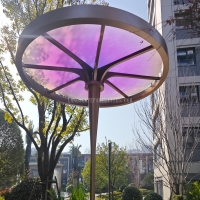Welcome to the website for landscape facilities products and knowledge.
How does the trash can’s design accommodate different waste disposal habits across cultures?
The design of trash cans plays a crucial role in accommodating diverse waste disposal habits across cultures, reflecting local values, infrastructure, and environmental priorities. In Western countries, multi-compartment bins for recycling (paper, plastic, glass) are common, emphasizing sustainability. In contrast, Asian cultures often prioritize compact, odor-sealing designs due to limited space and high population density. Some Middle Eastern nations favor larger, centralized bins for communal use, aligning with collective living norms.
Innovative designs also address cultural taboos—for example, foot-pedal lids in Japan minimize direct contact, respecting hygiene concerns. Scandinavian countries integrate sleek, minimalist bins to blend with urban aesthetics. Meanwhile, developing regions may use durable, low-cost materials like metal or woven baskets to withstand harsh conditions.
Smart bins with sensors or color-coded labels further bridge gaps by simplifying waste segregation for tourists and multicultural communities. Ultimately, trash can design is a silent yet powerful tool for fostering global sustainability by respecting cultural nuances in waste management.
Related search:

Recommendation
Metal frame with gradient color acrylic combined with high-end shading landscape facilities